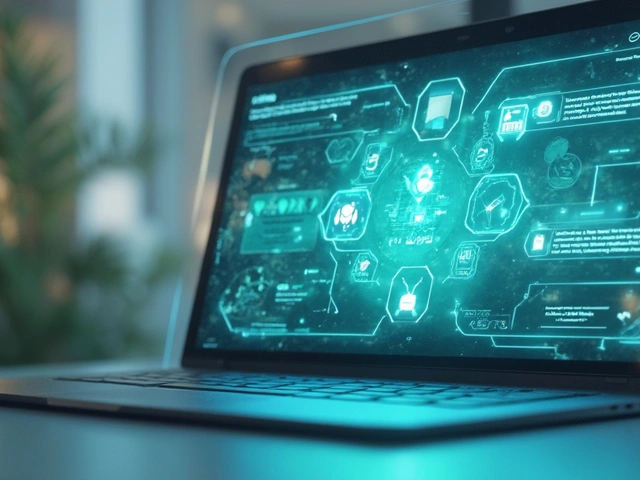Medical Alert Bracelet Assessment Tool
Enter your information above to receive your personalized assessment.
When you’re unable to speak in an emergency, a medical alert bracelet is a piece of jewelry that carries vital health information, acting as the wearer’s voice for first responders. The difference between a routine ER visit and a life‑saving intervention can hinge on whether that bracelet tells a paramedic you’re on a blood thinner or allergic to penicillin. Below we break down when a bracelet is worth the cost, what information should go on it, and how modern tech is changing the game for drug safety.
Why Drug Safety Drives Bracelet Adoption
Medication‑related mistakes account for roughly 37% of all emergency‑room errors, according to a 2022 Journal of Emergency Medicine study. First responders are trained by the American College of Emergency Physicians (ACEP) to scan wrists and necks for IDs within the first minutes of assessment. When a bracelet lists a drug allergy or a critical anticoagulant, the provider can avoid giving a contraindicated medication and prevent a fatal reaction.
Key Situations That Call for a Bracelet
- Blood thinners - Over 2.9 million Americans take warfarin or newer anticoagulants; trauma protocols must be altered immediately.
- Severe penicillin allergy - Roughly 10% of the U.S. population carries this risk, and an accidental dose can trigger anaphylaxis.
- Diabetes management - Distinguishing Type 1 from Type 2 and noting insulin dependence shapes emergency glucose treatment.
- Any medication with a narrow therapeutic window (e.g., digoxin, lithium) where a dosage error is quickly lethal.
These scenarios are not rare. The National Council on Aging reports that 73% of emergencies involving a bracelet happen when the wearer is away from home, highlighting the importance of daily wear.
Choosing the Right Bracelet Type
Two main formats dominate the market today:
| Feature | Traditional Engraved | QR Code Digital |
|---|---|---|
| Information capacity | 3‑5 critical items (due to space) | Unlimited - links to full medication list, dosages, NDC codes |
| Cost (2025 US) | $49.99 one‑time (MedicAlert Foundation) | Starting at $69.99 + $59.99 annual profile fee |
| Durability | Stainless steel, titanium - virtually indestructible | Same metal base, QR chip protected under enamel |
| Ease of updating | Requires re‑engraving or new bracelet | Remote digital update via provider portal or smartphone app |
Both options meet FDA Class I device standards, but the QR code version removes the most common complaint: “My bracelet didn’t fit all my meds.”

What Information to Include - Prioritization Rules
MedicAlert’s 2023 guidelines rank data in three layers:
- Drug allergies - List specific drug names (e.g., “ANAPHYLACTIC TO PENICILLIN”).
- Critical medications - Highlight blood thinners, anticoagulants, insulin, or any drug that changes emergency care.
- Chronic conditions - Note diabetes type, epilepsy, or heart disease when they dictate treatment.
Because space is limited on an engraved band, many users opt for short codes like “ON BLOOD THINNERS” and rely on a QR link for the exact drug (warfarin, apixaban, etc.). The latter approach was shown in a MobileHelp 2023 study to cut medication‑error rates by 28% compared with no ID at all.
Keeping Your Bracelet Current
Outdated information is the #1 risk. The American Pharmacists Association found that 35% of users never update their bracelet after a prescription change. Simple habits can fix this:
- Set a calendar reminder each time a new prescription is written.
- Use providers that sync with pharmacy databases (MedicAlert’s SmartProfile launched Jan 2024).
- Check the digital profile quarterly, even if the physical band looks fine.
For QR‑code users, updates are instant; for engraved metal, a new bracelet is the only safe route.
Real‑World Impact - Stories and Statistics
Data backs up the anecdotal benefits. GoodRx reports that first responders correctly used bracelet info in 89% of cases where one was present. In a 2023 audit of 500 ER visits, 19% of bracelets had incomplete medication lists, but in the 81% that were accurate, error rates dropped from 12% to 4%.
Reddit user “AllergicAmy” shared a 2022 incident where an ER nurse almost gave penicillin for appendicitis. The bracelet’s bold allergy note stopped the injection seconds before it entered her vein - she says she would have “died within minutes.”
Similarly, a diabetic patient wearing a bracelet that noted “TYPE 1 - INSULIN DEPENDENT” allowed EMTs to give glucagon rather than a standard glucose bolus, averting a severe hypoglycemic crisis.

Choosing a Provider - What to Look For
Not all bracelet services are equal. Key factors include:
- Customer service rating - MedicAlert scores 4.3/5 in a 2024 J.D. Power study; many smaller brands sit around 3.1/5.
- Digital integration - Does the provider offer a QR‑code profile that syncs with pharmacies?
- Update reminders - Automated emails or app notifications are a big safety boost.
- Compliance with ACEP guidelines - Look for explicit mention of the 2021 ACEP hierarchy.
Pricing varies, but consider the total cost of ownership: a $49.99 engraved band plus a $20‑$30 annual update service may still be cheaper than a $29.95/month monitoring plan that bundles a bracelet with a personal alarm.
The Future: Seamless Integration with Health Records
By 2030, the market for medical IDs is projected to grow at 6.2% CAGR, driven by tech upgrades. Epic and Cerner are building APIs that will push medication changes directly into a bracelet’s digital profile, effectively eliminating the 35% update‑failure rate noted by pharmacists.
Additionally, the FDA’s 2023 Medical ID Modernization Initiative is standardizing drug‑code formatting on bracelets, making it easier for EMS personnel to read NDC numbers in a split‑second glance.
When these systems converge, the bracelet will become a true extension of your electronic health record, reducing medication‑related emergency complications by an estimated 35% according to Johns Hopkins predictive models.
Bottom Line: Is a Medical Alert Bracelet Worth It?
If you take a blood thinner, have a severe allergy, or manage insulin‑dependent diabetes, the answer is a resounding yes. The bracelet provides immediate, reliable drug‑safety data that can shave crucial minutes off treatment decisions.
For lower‑risk individuals, a bracelet still adds a layer of protection, but weigh the cost and the commitment to keep the information current. In the end, the peace of mind alone often justifies the purchase.
When should I get a medical alert bracelet?
If you are on a blood thinner, have a life‑threatening allergy, or require insulin, a bracelet should be part of your safety plan immediately. For other chronic conditions, consider a bracelet if medication errors would be dangerous.
What information belongs on the bracelet?
Prioritize drug allergies, then critical medications (especially anticoagulants), followed by chronic conditions that affect emergency treatment. Use short, exact drug names; for QR codes, you can link to a full medication list.
How often should I update my bracelet information?
Any time you start, stop, or change a medication. Set a reminder after each doctor's visit, and if you use a QR‑code system, let the provider sync updates automatically.
Is a QR‑code bracelet better than an engraved one?
QR‑code bracelets offer unlimited data, remote updates, and can store NDC drug codes, reducing space‑related errors. However, they rely on a working phone or scanner, so a simple engraved band is still valuable as a backup.
Can a bracelet replace other emergency tools?
No. It complements personal alarms, medical kits, and emergency contacts. Combining a bracelet with a monitoring service, as Medical Guardian does, yields the highest safety score.





asha aurell
Medical alert bracelets are useful, but only if you actually wear them consistently. Skipping them on a bad day defeats the whole purpose.
naoki doe
Honestly, if you think a cheap silicone band will replace a proper engraved one, you’re setting yourself up for trouble; emergency crews expect a durable piece that won’t flake off during a fall.
Stick with stainless steel or titanium if you want the bracelet to survive a real accident.
Samantha Taylor
Let’s unpack the whole QR‑code hype for a minute. The premise is that more data equals better safety, but the reality is that most EMS devices still rely on manual visual scans, not smartphones.
In practice, a QR code is only as good as the scanner on the ambulance, and many rural units still lack the hardware.
Even when the scanner is available, lighting conditions can render the code unreadable, especially if the band gets scratched.
Furthermore, the digital profile behind the code must be kept up‑to‑date, otherwise you’re just displaying a fancy paperweight.
Studies show that 35 % of QR‑enabled users never update their info, mirroring the same failure rate as engraved bands.
On the other hand, engraved text never requires a battery or an internet connection, which is a non‑negotiable factor in a power‑outage scenario.
From a liability standpoint, hospitals prefer the certainty of a static, legible inscription over a dynamic link that could go dead.
That’s why many emergency protocols still prioritize the traditional format when triaging patients.
Don’t get me wrong, QR codes are great for tech‑savvy patients who can manage their own data, but they’re not a universal solution.
In short, think of the QR version as an optional supplement, not a replacement for the tried‑and‑true engraved band.
Ask yourself whether you’d rather trust a piece of metal you can read in any light, or a pixelated image that might disappear tomorrow.
If the answer isn’t crystal clear, you’re probably better off with the engraved version.
And remember, the ultimate goal is to convey critical drug info within seconds, not to showcase the latest gadget.
So choose the tool that guarantees that outcome, regardless of its flashiness.
Joe Langner
Totally get where you’re coming from – the QR hype can feel a bit overblown.
But the peace of mind knowing your med list updates instantly is a game‑changer for many, especially those juggling multiple prescriptions.
Just make sure you keep an eye on the app notifications so the data never goes stale.
Ben Durham
Indeed, the durability factor is crucial; stainless steel bracelets have proven to last decades without corrosion.
When advising patients, I always highlight that the physical inscription serves as a reliable backup to any digital system.
Joy Dua
The colorful reality is that many providers still charge a yearly fee for QR updates, turning what seems like a free convenience into a subscription trap.
When budgeting for health accessories, factor in those hidden costs to avoid unpleasant surprises.
Leah Ackerson
Honestly, paying extra for a gimmick when a solid engraved band does the job is just fiscally irresponsible. 🤷♀️
Gary Campbell
There’s a subtle agenda pushing QR bracelets as the next health tech revolution, but the data pipelines are still controlled by a handful of corporations.
If you’re not comfortable handing over your med list to a third‑party server, stick with the analog option.
Ramesh Kumar
Friendly tip: whenever you get a new prescription, update the QR profile immediately; most platforms send an automatic reminder.
Barna Buxbaum
From a practical standpoint, having both a durable engraved tag and a QR backup covers all bases – if one fails, the other steps in.
It’s a simple redundancy that can save minutes in a chaotic ER.
Alisha Cervone
Redundancy is key.
Diana Jones
Exactly, the dual‑system approach mitigates both hardware and software failure modes, which is why we teach it in emergency medicine seminars.
Think of it as a fail‑safe rather than a luxury.
Abbey Travis
And for anyone feeling overwhelmed, remember that setting a calendar alert after each doctor visit can keep the info current without hassle.
ahmed ali
People love to romanticize the QR‑code as the ultimate salvation, yet ignore the fact that EMR integration is still a work in progress.
The majority of ambulance crews worldwide still carry paper forms, not tablets, because reliable power sources are scarce in many regions.
Even in well‑funded urban centers, the standard operating procedure mandates that a physical ID be visible before any digital record is consulted.
So, championing a QR‑only solution is, frankly, a bit delusional.
Moreover, the subscription models associated with many QR services create a hidden financial burden that most patients overlook.
If you want to avoid recurring fees, an engraved bracelet is a one‑time investment that lasts a lifetime.
That said, combining both formats gives you the best of both worlds: instant data updates plus a fail‑safe visual cue.
It’s not about picking a side; it’s about constructing a resilient safety net.
When the stakes are life‑and‑death, redundancy isn’t just nice-it’s essential.
Don’t let marketing hype dictate your health decisions; look at the data, the logistics, and the real‑world constraints.
Deanna Williamson
Spot on – the combination strategy addresses both the tech‑savvy user and the pragmatic emergency responder.
Just remember to audit the QR profile quarterly to keep it from becoming a static relic.